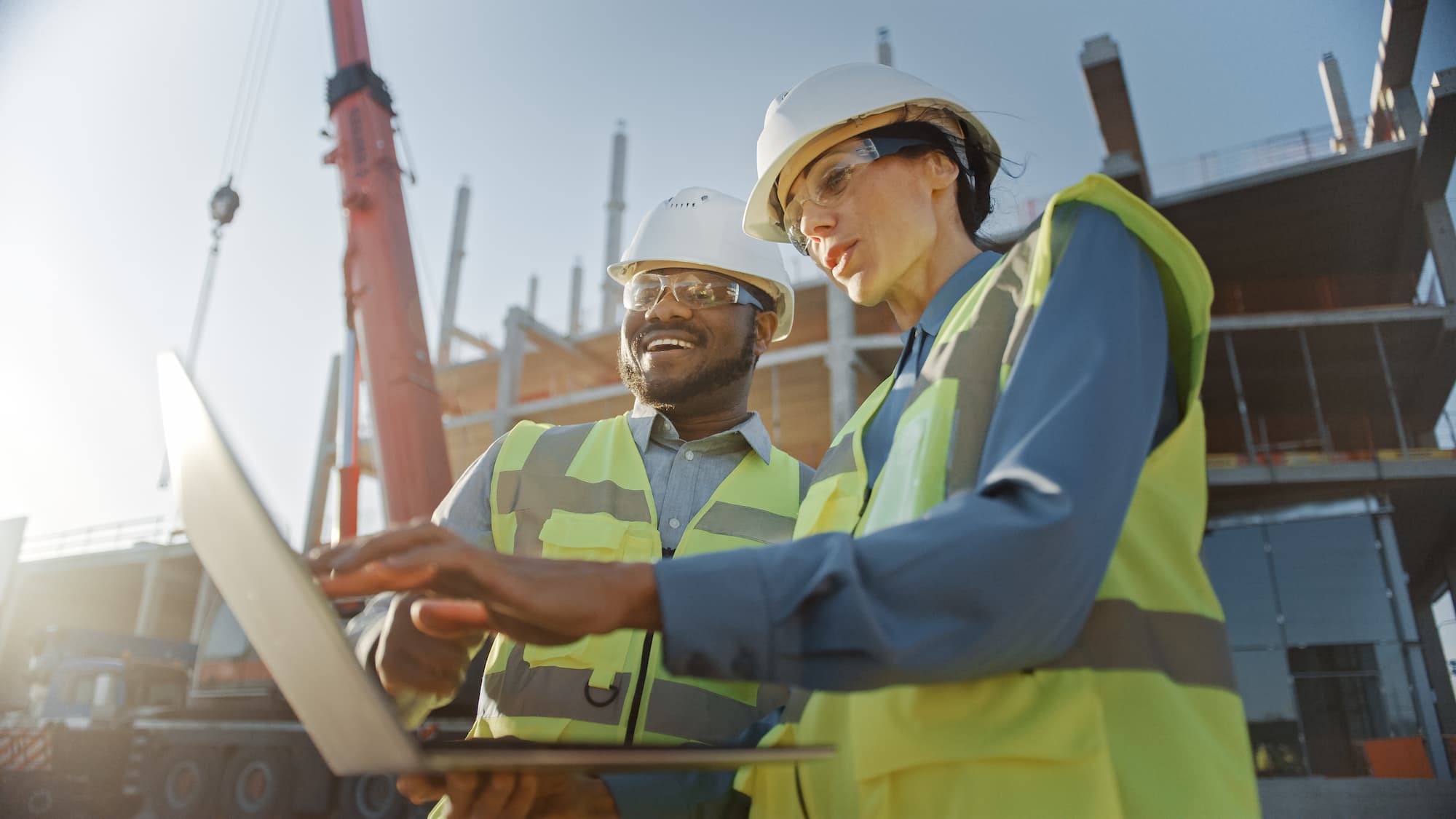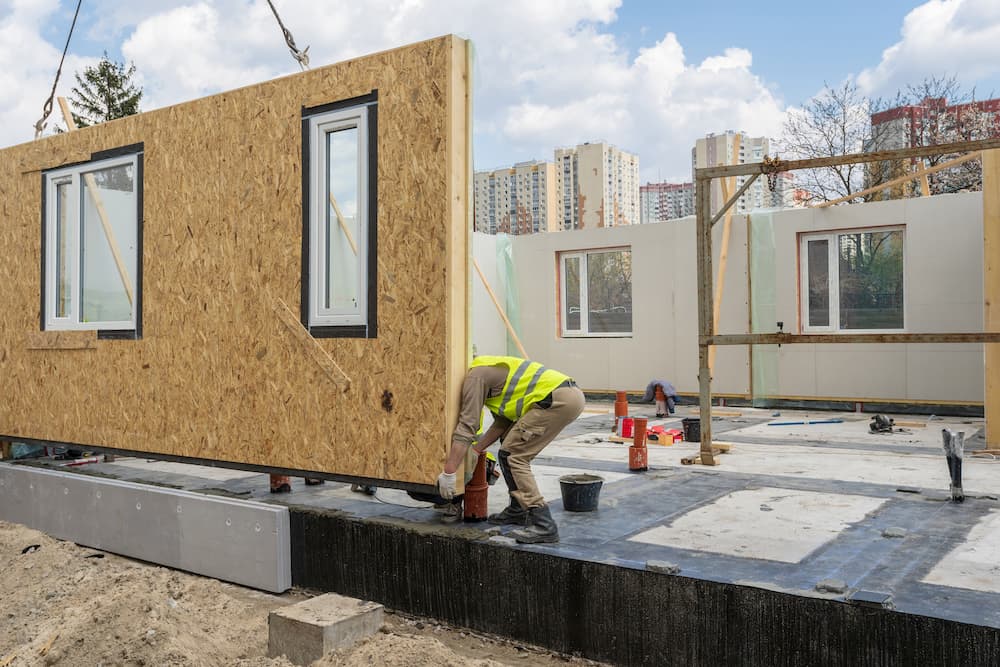

Holly Sutton
Holly is a consultant in our property team, working with SMEs and Real Estate Consultancies to source quality Project Managers. She is passionate about sustainability, and the role property development can have in creating a more sustainable world.
What does sustainability in property development look like?
Sustainable property development is a way of building while minimising environmental impact.
It’s more than building something with solar panels or wind turbines attached. It’s about changing how you think about how things are built and trying to do them better.
It requires a commitment to continually improve and look at things in new ways. And it requires collaboration between lots of stakeholders. Everyone from investors, developers and builders to lawyers, accountants and local government need to be part of sustainable planning projects.
How can sustainability contribute to a better future?

Sustainability in property development can help improve:
• the quality of life for people– through buildings that use less energy and resources and recycle more waste;
• the quality of life for wildlife– by protecting biodiversity and conserving natural resources;
• the quality of life for future generations – by ensuring that we do not deplete finite stocks of raw materials.
Sustainable practices contribute to a developer's profitability
Increased efficiency results in cost savings. BREEAM Excellent rated buildings can increase capital costs by up to 1.71%. But these costs are usually recovered in 2 years due to reduced operational costs. They enjoy reduced energy costs and water costs, while reducing carbon emissions by 33%. These savings continue year over year as the building ages.
Sustainability practices also improve a developer’s reputation and brand image. People are paying more attention to environmental problems such as climate change. Consumers are increasingly aware of their impact on the environment. Many now seek out sustainable products and services whenever possible. Sustainability has even become an expectation among certain demographics. There is an increased interest in “green” living spaces with access to amenities within walkable neighbourhoods.
Almost 40% of Millennials have chosen a job because of the company’s sustainability. It stands to reason that the buildings they live and work in will carry similar significance.
Lower long term operating costs and higher demand, mean developers can increase sale prices and occupancy rates. And finally, many investors look favourably on green development, as the innovation used can lead to greater return.
Sustainable practices reduce operational costs
We’ve already mentioned that sustainability in property development can reduce operational costs. Sustainable buildings are less expensive to run, as well as being better for the planet.
Using green technology, such as a photovoltaic solar energy system, can reduce energy costs. This would capture sunlight and converts it into electricity without heat or air pollution. These systems typically return their investment in around five years and then continue to save money for the next 25 years or more.

Sustainably built properties also help reduce waste. Building with recycled materials is better for the environment, reduces costs, and makes the building process more sustainable in the long run.
Finally, sustainability reduces general maintenance costs over time. Low-maintenance paint finishes and durable flooring options require minimal upkeep. Bamboo floors are easy to clean without polishes or waxes. This reduces both time, cost and chemical usage.
Sustainable practices can help the economy grow
There are wider economic and societal benefits to sustainable construction too.
Sustainable construction practices can help the economy grow. Sustainable building and design often requires more time and attention than traditional methods. This means that, while construction times may be shorter, labour accounts for a higher percentage of costs. This means more jobs, and a boost for economic growth.
Sustainable construction projects have shown an ability to improve the quality of life in areas where they’re built as well. Creating urban hubs provides better health, socio-economic and health outcomes. People working, shopping and socialising within walkable distance of where they live reduces pollution and increases health and wellbeing.
Sustainability can also help reduce the environmental impact of construction projects in general:
- By reducing waste from raw materials during production.
- By improving energy efficiency during construction.
- By incorporating recycled products into designs wherever possible.
- By avoiding over-polluting existing ecosystems when (re)building on them.
How can developers make sustainable development happen?
Sustainable development isn’t a complex concept, but the practice isn’t as simple as it sounds. Developers are being pushed to impact their surrounding environment as little as possible. That means coming up with innovative approaches to building. It means finding and implementing new technology. It means finding ways of incorporating eco friendly methods into building practices.
Developers have already taken strides toward integrating sustainability into their business models. More buildings are being designed to be energy efficient. Modern Methods of Construction are a bigger part of government funded contracts. MMC sees buildings created flat-pack style in factories, then assembled afterwards, reducing wastage and build time.
But there are still barriers standing between developers and a sustainable future. For one, sustainable building projects needs to address environmental and social justice issues. If sustainable building negates affordable housing opportunities, we’ll replace one issue with another.
Many developers are struggling to reach environmental targets and still turn a profit. This shows there is still work to be done
Property developers can’t bear the brunt of solving these problems alone. Real estate investors who believe in the vision of a more environmentally friendly sector. Government agencies who can leverage funding. Tech companies with innovative processes and products.
Improving sustainability with happen through getting all players involved. We need to encourage collaboration to establish efficient processes that can lead to more sustainable projects.
Leaders in sustainability need to communicate and share best practice if developers are to move towards net zero. Collaboration will be critical for success for sustainability in property development while margins are tight and targets high.

